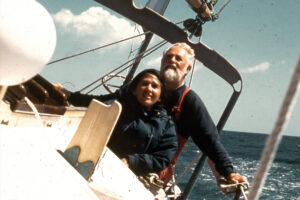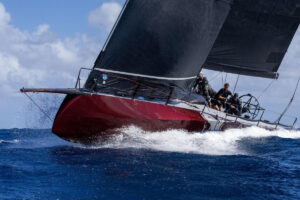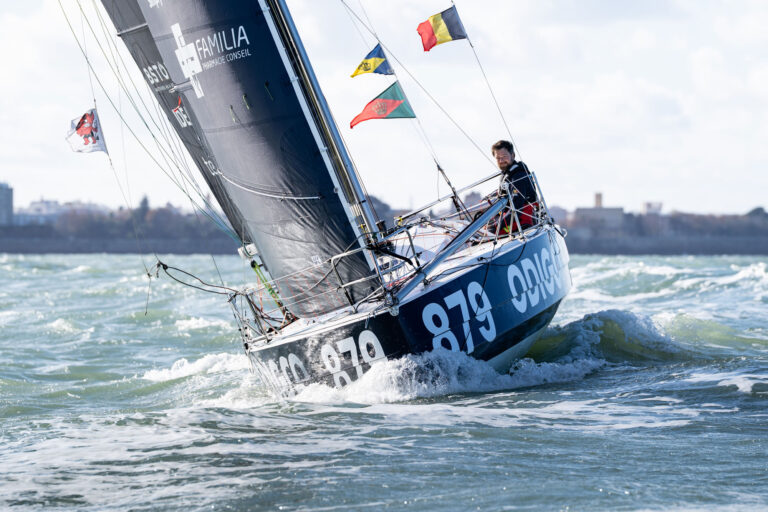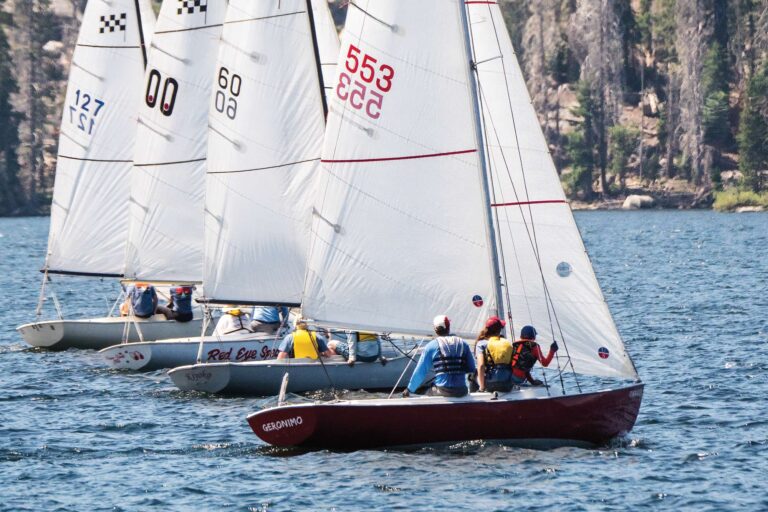
The whale shark is certainly not a whale, nor is it really much of a shark, at least not the snarly predatory kind often imagined with row upon row of serrated teeth. It’s not particularly fast either, and swaggers around the ocean at much the same casual pace of a sea turtle. And because it never has to surface for air, and regularly swims to depths of more than 3,000 feet, its breeding habits and migration patterns remain mostly a wonderful mystery. But one fact is indisputable: The whale shark is an absolute giant. At about 40 feet and 47,000 pounds, it’s the world’s largest fish, to be exact, and recently we had the rare privilege and pleasure of swimming with one.
Only at certain times and in a few specific corners of the world can these gentle giants be sighted with regularity — about one week after a full moon, during coral spawning, when aquatic life gathers in vast numbers to feed up the food chain. And as fate would have it, our arrival in Australia on Dream Time, our 1981 Cabo Rico, and an expedition along the country’s remote western coastline, just happened to coincide with this phenomenon.
Even with nature in your favor, simply sighting a whale shark is a challenging endeavor. After all, the Ningaloo Reef, a World Heritage Site where these fish gather for a few months each year, covers a vast area more than 2,000 square nautical miles, and swimming with one, well, that’s significantly harder and requires a coordinated team effort.
We teamed up with Coral Bay Eco Tours, one of only three vessels in the area that’s licensed, experienced and equipped to research and view these magnificent fish. But with more than 20 years’ experience, even its crew requires a little help locating the elusive creatures, relying on a spotter plane to circle this corner of the Indian Ocean in the hope of narrowing the search.
After a few hours of snorkeling the drop-off, where the reef fell away under our fins to a deep, rich world of blue sapphire and sparkling light fractures, the VHF crackled to life to deliver the much-awaited news — a whale shark sighting 10 miles offshore. The dive vessel became a flurry of excitement and activity, and while our skipper navigated us in the general direction of Madagascar, we quickly geared up and, as practiced, gathered on the swim platform like a team of Navy SEALs readying for deployment. With confirmation that the whale shark was approaching, we all rolled, splashed and clambered into the ocean, buried our masks underwater and eagerly awaited our first encounter with the king of fish.
It materialized slowly from the planktonic-rich waters like a white-spotted submarine, its broad, flat head gliding directly toward our tiny huddled group. It seemed entirely indifferent to our presence, judging us, perhaps, to be just a rather amusing school of fish wishing to hitchhike a ride. As it drew closer, we swam to the sides to avoid a very slow head-on collision, and for a few magical minutes we swam alongside and behind its great swaying tail before watching it silently disappear into the depths. It was an awe-inspiring encounter, much like how sighting an alien spacecraft would feel, I imagine, or perhaps contact with a woolly mammoth. It felt out of this world.








